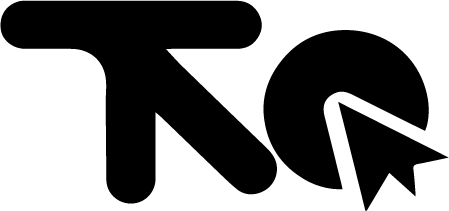PHP, a popular server-side scripting language, powers countless websites. This beginner’s guide will equip you with the essential knowledge to start your PHP journey. Learn the basics, explore frameworks, and unlock your potential to build dynamic web applications.
PHP Fundamentals
Understanding the core concepts of PHP is essential for anyone venturing into web development using this powerful scripting language. This chapter will delve into the fundamental building blocks of PHP, including its syntax, variables, data types, and operators. Mastering these concepts will provide a solid foundation for building robust and dynamic web applications.
PHP, a widely-used open-source scripting language, is particularly well-suited for web development and can be embedded into HTML. Let’s start with the basics of PHP syntax.
PHP Syntax
PHP code is executed on the server, and the results are sent back to the browser. PHP code is enclosed within special start and end tags which tell the server to interpret the code within them as PHP code. These tags are:
<?php and ?>
Any code outside these tags is treated as HTML. A simple PHP script might look like this:
<?php
echo "Hello, World!";
?>
The echo statement is used to output text to the browser. Every statement in PHP must end with a semicolon (;). This is a critical aspect of PHP syntax.
Variables
Variables are used to store data in PHP. A variable is a named storage location in the computer’s memory. In PHP, variables are declared using a dollar sign ($) followed by the variable name. For example:
<?php
$name = "John Doe";
$age = 30;
?>
Variable names are case-sensitive, meaning $name and $Name are treated as different variables. PHP is a loosely typed language, so you don’t need to declare the data type of a variable. PHP automatically determines the data type based on the value assigned to it. This is a key aspect of *lập trình PHP*.
Data Types
PHP supports several data types, including:
- String: A sequence of characters, e.g., “Hello”.
- Integer: Whole numbers, e.g., 10, -5.
- Float: Floating-point numbers, e.g., 3.14, -2.5.
- Boolean: Represents true or false values.
- Array: A collection of values.
- Object: An instance of a class.
- NULL: Represents the absence of a value.
Understanding these data types is crucial for manipulating data effectively in PHP. For example:
<?php
$name = "Alice"; // String
$age = 25; // Integer
$height = 5.8; // Float
$isStudent = true; // Boolean
?>
Operators
Operators are symbols used to perform operations on variables and values. PHP supports various types of operators, including:
- Arithmetic Operators: +, -, *, /, % (modulus).
- Assignment Operators: =, +=, -=, *=, /=.
- Comparison Operators: ==, !=, >, <, >=, <=.
- Logical Operators: && (and), || (or), ! (not).
These operators are fundamental for performing calculations, making comparisons, and controlling the flow of your PHP scripts. For example:
<?php
$x = 10;
$y = 5;
$sum = $x + $y; // Addition
$product = $x * $y; // Multiplication
if ($x > $y) {
echo "$x is greater than $y";
}
?>
Importance for Building Web Applications
These fundamental concepts are the cornerstone of building any web application using PHP. Understanding variables and data types allows you to store and manipulate data, while operators enable you to perform calculations and make decisions based on conditions. Proper use of PHP syntax ensures that your code is correctly interpreted by the server.
PHP cơ bản concepts, such as variables, data types, and operators, are essential, regardless of whether you’re building a simple website or a complex web application. Furthermore, understanding these basics is crucial before delving into more advanced topics like object-oriented programming or working with PHP frameworks.
While mastering PHP cơ bản is important, many developers choose to use a framework PHP to speed up development and improve code maintainability. These frameworks provide a structure and set of tools that simplify common tasks such as routing, database interaction, and templating.
The next chapter will demonstrate how to create a simple web application using PHP. We will explore handling user input, displaying data, and connecting to a database, while emphasizing the importance of security best practices.
Chapter Title: PHP Basic Web Application
Building upon the *PHP fundamentals* we covered in the previous chapter, “PHP Fundamentals,” where we explored PHP syntax, variables, data types, and operators, we’ll now put that knowledge into practice by creating a simple web application. This chapter will demonstrate how to handle user input, display data, and connect to a database using **lập trình PHP**. Remember those variables and operators? We’re about to see them in action!
Let’s start with handling user input. A common way to receive input from users is through HTML forms. Consider a simple form that asks for a user’s name:
“`html
“`
This form sends the data to `welcome.php` using the POST method. In `welcome.php`, you can access the submitted name using the `$_POST` superglobal array:
“`php
“`
Notice the use of `htmlspecialchars()`. This is a *crucial security measure* to prevent Cross-Site Scripting (XSS) attacks. XSS occurs when malicious code is injected into your website through user input. `htmlspecialchars()` encodes special characters, making them harmless.
Now, let’s move on to displaying data. PHP excels at dynamically generating HTML. Imagine you have an array of products you want to display on your website:
“`php
“;
foreach ($products as $product) {
echo “
“;
}
echo “
“;
?>
“`
This code iterates through the `$products` array and displays each product as a list item. Again, `htmlspecialchars()` is used to prevent XSS attacks.
Next, let’s explore connecting to a database. This is where the real power of **PHP cơ bản** comes into play. We’ll use MySQLi, a common PHP extension for interacting with MySQL databases.
First, you need to establish a connection:
“`php
connect_error) {
die(“Connection failed: ” . $conn->connect_error);
}
echo “Connected successfully”;
?>
“`
Replace `”your_username”`, `”your_password”`, and `”your_database”` with your actual database credentials. Always store database credentials securely and avoid hardcoding them directly in your code.
Now, let’s retrieve data from a table named “users”:
“`php
query($sql);
if ($result->num_rows > 0) {
// output data of each row
while($row = $result->fetch_assoc()) {
echo “id: ” . $row[“id”]. ” – Name: ” . htmlspecialchars($row[“name”]). ” – Email: ” . htmlspecialchars($row[“email”]). “
“;
}
} else {
echo “0 results”;
}
$conn->close();
?>
“`
This code fetches all rows from the “users” table and displays the id, name, and email for each user. Notice the continued use of `htmlspecialchars()` for outputting user data.
*Security is paramount* when working with databases. Always use prepared statements to prevent SQL injection attacks. SQL injection occurs when malicious SQL code is injected into your database queries through user input. Prepared statements allow you to separate the SQL code from the data, preventing the injected code from being executed.
While this chapter provides a basic introduction to creating web applications with PHP, it’s important to understand that real-world applications are often much more complex. This is where **framework PHP** can significantly simplify development. Frameworks provide a structure, tools, and libraries to help you build robust and scalable applications more efficiently. In the next chapter, we will delve into the world of PHP frameworks and explore their benefits.
Building upon our foundation of **PHP cơ bản** (basic PHP) and the simple web application we crafted in the previous chapter, it’s time to explore the world of PHP frameworks. Frameworks are essential tools for any serious **lập trình PHP** (PHP programming) project, offering structure, security, and efficiency. They allow developers to focus on the unique aspects of their application rather than reinventing the wheel.
Framework for PHP
PHP frameworks provide a basic structure for streamlining the development of web applications. By using a framework, you benefit from:
- Increased Development Speed: Frameworks offer pre-built components and tools that accelerate the development process.
- Improved Code Organization: They enforce a consistent coding style and structure, making your code more maintainable.
- Enhanced Security: Frameworks often include built-in security features that protect against common vulnerabilities.
- Easier Collaboration: A standardized structure makes it easier for teams to work together on a project.
Popular PHP Frameworks
Several PHP frameworks are widely used in the industry. Let’s examine some of the most popular ones:
*Laravel*
Laravel is known for its elegant syntax and developer-friendly features. It’s a great choice for building complex web applications with features like:
- Eloquent ORM: Simplifies database interactions.
- Blade Templating Engine: Allows for clean and efficient view creation.
- Artisan Console: Provides helpful commands for common tasks.
- Robust Security Features: Offers protection against common web vulnerabilities.
Laravel emphasizes convention over configuration, which means that it provides sensible defaults that reduce the amount of configuration required. This makes it easier and faster to get started with a new project.
*Symfony*
Symfony is a highly flexible and robust framework that is well-suited for building large-scale enterprise applications. It’s known for:
- Its Component-Based Architecture: Allows developers to use only the components they need.
- Its Adherence to Best Practices: Encourages the use of established design patterns.
- Its Extensibility: Can be easily extended with third-party bundles.
- Its Stability: A mature framework with a large and active community.
Symfony’s flexibility makes it a powerful tool, but it can also be more complex to learn than some other frameworks.
Comparing Frameworks
Choosing the right **framework PHP** depends on the specific requirements of your project. Here’s a brief comparison:
*Laravel vs. Symfony*
- Learning Curve: Laravel has a gentler learning curve, making it easier for beginners to pick up. Symfony is more complex but offers greater flexibility.
- Project Size: Laravel is well-suited for projects of all sizes, while Symfony is often preferred for large-scale enterprise applications.
- Development Speed: Laravel’s convention-over-configuration approach can lead to faster development times.
- Flexibility: Symfony’s component-based architecture provides greater flexibility.
Choosing the Right Framework
When selecting a PHP framework, consider the following factors:
- Project Requirements: What are the specific needs of your project?
- Team Expertise: What frameworks are your team members already familiar with?
- Community Support: How active is the framework’s community?
- Documentation: Is the documentation clear, comprehensive, and up-to-date?
- Security: Does the framework offer robust security features?
For beginners diving into **lập trình PHP**, Laravel is often a good starting point due to its ease of use and comprehensive documentation. However, Symfony’s flexibility makes it a powerful choice for more complex projects. Remember to carefully evaluate your project’s needs and your team’s expertise before making a decision.
In the next chapter, we will delve into the specifics of setting up and working with a chosen framework, applying the **PHP cơ bản** knowledge we’ve gained to build more sophisticated web applications.
Conclusions
By mastering PHP fundamentals, building a basic web application, and exploring PHP frameworks, you’ll gain the foundation to create dynamic websites and web applications. Start your PHP development journey today!











